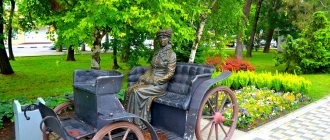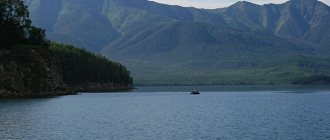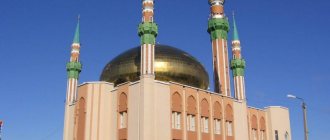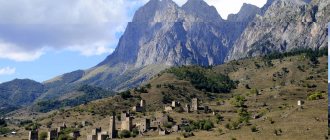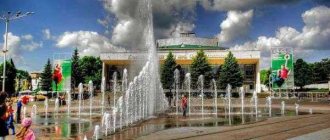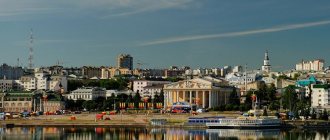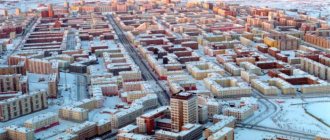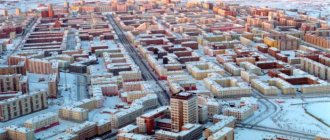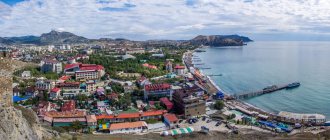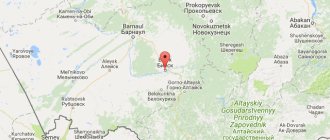Magadan is the capital of the Magadan region, the northernmost on the map of the Russian Federation. A young city built during the years of Soviet power, this year on July 14 it turned 80 years old. Before answering the question of where Magadan is located, you need to get acquainted with its history, which is truly complicated.
Population
Magadan's population has declined significantly since Soviet times. According to the first official data available to researchers, in 1939 there were 27,313 people living in the city.
After this, for many years the dynamics were extremely positive. Already in 1956, the population of the city of Magadan exceeded 50 thousand people. In 1973, 101 thousand inhabitants were already recorded. In 1989, the population of Magadan exceeded 150,000. The record was currently set in 1991. At that time, 155 thousand people officially lived in this city.
Geographical location of Magadan
In the North-East of Russia, where Magadan is located on the map, is the Sea of Okhotsk. The bay, extending far into the coast, was known from ancient times to many sailors who went there for water and for minor ship repairs. Therefore, the port city was built on this site between the Nagaev and Gertner bays. Magadan occupies part of the isthmus that connects the Staritsky Peninsula with the mainland. The Magadanka River, which originates in the swamps of the isthmus and flows into the Tauyskaya Bay, divides the city into two parts. Being the capital of the Magadan region, which borders the Khabarovsk Territory in the west, the Koryak Autonomous Okrug in the east and Yakutia in the north and north-west, the city has no railway connections.
The main road connecting Magadan with Yakutsk is the Kolyma Highway (P504), which is Russia’s key access to the Pacific coast. The distance to Moscow is just over 7 thousand kilometers. The city covers an area of 295 square kilometers with a population of less than 100 thousand people. The city includes several villages: Dukcha, Snezhny, Snezhnaya Dolina, Uptar and Sokol, where the airport is located 54 kilometers from the center of Magadan.
Negative dynamics
After this, the reverse negative dynamics began. The population of Magadan began to decline inexorably over the years. This trend continued until 2002. Throughout the 90s, people left Magadan en masse, but no one came to replace them. The population of Magadan residents by 2002 was only 99,399 people. After this, positive dynamics began. As throughout the country, in the 2000s the situation in this regional center began to improve.
Until 2007, the population and the number of residents of Magadan grew. True, not by much, reaching only 100,200 people. Then the decline began again, which continued until recently. After reaching its lowest point in 2016 (then the population of Magadan was 92,081 people), a positive trend has been observed in the last couple of years. Experts note growth and positive dynamics.
The total population of Magadan today is 92,782 people.
City `s history
The Russian government began to show interest in the Okhotsk coast and Chukotka from the beginning of the 19th century, when the authorities decided to intensify their search for new deposits. They were especially interested in precious metals. Therefore, expeditions were sent to the outlying regions of Russia, but it was not possible to find a lot of gold, so much that it could be mined on an industrial scale.
Finally, in 1915, in the area of the Srednekan River, prospector Shafigullin, who had the nickname Boriska and traditionally worked alone, found the first gold in Kolyma.
In 1926, an expedition of Soviet geologist Sergei Obruchev arrived at this place to assess the conditions of the location of this precious metal. An expedition began to study Kolyma in detail, led two years later by geologist Yuri Bilibin. Detailed information about the economy of this region was collected by the Molody hydrographic expedition. It was these researchers who managed to discover Nagaev Bay as the most convenient for establishing a port and starting to build roads from this place.
In 1928, an official decision was made to build the East Even cultural base, and the next year they began to build houses for employees, a veterinary center, a secondary school, a boarding school building and a hospital. It is 1929 that is considered the year of the founding of Magadan, which at that time still had the status of a village. It became a city 10 years later.
From 1930 to 1934, Magadan was considered the center of the Okhotsk-Even National Okrug, and from 1954 to the present, it has been the center of the founded Magadan Region.
Map
| Magadan: maps |
Magadan: photo from space (Google Maps) Magadan: photo from space (Microsoft Virtual Earth)
| Magadan. Nearest cities. Distances in km. on the map (in brackets along roads) + direction. Using the hyperlink in the distance , you can get the route (information courtesy of the AutoTransInfo website) | |||
| 1 | Ola | 27 (30) | IN |
| 2 | Tent | 60 (82) | WITH |
| 3 | Ust-Omchug | 184 (262) | WITH |
| 4 | Yagodnoe | 334 (533) | WITH |
| 5 | Seymchan | 383 (490) | WITH |
| 6 | Susuman | 384 (581) | WITH |
a brief description of
Located 7110 km east of Moscow, on the shore of Nagaev Bay in the Sea of Okhotsk, on permafrost and in a zone of increased seismicity, 1810 km from the railway. Khabarovsk station.
Seaport, the largest in the northeast of Russia. The Kolyma Highway begins from Magadan.
The climate is sharply continental and harsh. The average temperature in January is -17, in July +11. Precipitation is 530 mm per year.
Territory (sq. km): 1216
Information about the city of Magadan on the Russian Wikipedia website
Historical sketch
The construction of Magadan began in 1929 in connection with the development of natural resources in the North-East of the USSR (gold mining in the Kolyma basin). The name Magadan is from Even Mongodan “sea sediments; fin,” was the name of one of the rivers that flowed near the site of the city’s origin. A less convincing version connects the name with the name of Even Magda, on the site of whose camp the city eventually grew.
In 1930-50 Magadan was the control center of the North-Eastern forced labor camps of the NKVD of the USSR.
The city since 1939. Since 1953 the center of the Magadan region.
In 2000, the city included Armansky, Olsky and Khasynsky urban districts instead of the Olsky and Khasynsky districts of the region. In 2002, the Olsky and Khasynsky districts were restored.
Municipal indicators
| Index | 1990 | 1999 | 2001 | 2003 | 2005 |
| Demography | |||||
| Number of births, per 1000 population | 13.8 | 8.5 | 8.8 | 11.7 | 10.7 |
| Number of deaths, per 1000 population | 5.8 | 8.9 | 9.3 | 11.5 | 12.5 |
| Natural increase (decrease), per 1000 population | 8 | -0.4 | -0.5 | 0.2 | -1.8 |
| Standard of living of the population and social sphere | |||||
| Average monthly nominal accrued wages, rub. | 0.611 | 3288 | 5808 | 9448.5 | 14684.46 |
| Average housing area per inhabitant (at the end of the year), sq.m. | 15.7 | 19 | 19 | 22.5 | 22.7 |
| Number of preschool institutions, pcs. | 71 | 30 | 30 | 30 | 30 |
| Number of children in preschool institutions, thousand people | 12.8 | 4.2 | 4.5 | 4.7 | 5.1 |
| Enrollment of children in preschool educational institutions (at the end of the year), as a percentage of the number of children of the corresponding age, % | 77 | 76.5 | |||
| Number of daytime educational institutions (at the beginning of the school year), pcs. | 31 | 28 | 27 | 27 | 25 |
| Number of students in daytime educational institutions, thousand people | 23.4 | 16.8 | 14.8 | 13.1 | 11.2 |
| Number of doctors, people. | 969 | 757 | 726 | 738 | 737 |
| Number of nursing staff, people. | 2068 | 1729 | 1856 | 1875 | 1872 |
| Number of hospital institutions, pcs. | 10 | 14 | 14 | 14 | 14 |
| Number of hospital beds, thousand units | 2.5 | 2.1 | 2.1 | 2.1 | 2.1 |
| Number of medical outpatient clinics, pcs. | 24 | 29 | 29 | 34 | 33 |
| Capacity of medical outpatient clinics, visits per shift, thousand units. | 3.5 | 3.5 | 3.2 | 3.3 | 3.7 |
| Number of registered crimes, pcs. | 3807 | 3804 | 3405 | 2231 | 2562 |
| Persons who committed crimes were identified, persons. | 1836 | 2159 | 952 | 1118 | |
| Economy, industry | |||||
| Number of enterprises and organizations (at the end of the year), pcs. | 6094 | 6795 | 7271 | 7723 | |
| Number of operating enterprises by type of activity: mining (at the end of the year), pcs. | 3 | ||||
| Number of operating enterprises by type of activity: manufacturing (at the end of the year), pcs. | 40 | ||||
| Number of operating enterprises by type of activity production and distribution of electricity, gas and water (at the end of the year), pcs. | 13 | ||||
| Volume of shipped goods of own production by type of mining (in actual prices), million rubles. | 15.1 | ||||
| Volume of shipped goods of own production by type of manufacturing (in actual prices), million rubles. | 606.2 | ||||
| Volume of shipped goods of own production by type of production and distribution of electricity, gas and water (in actual current prices), million rubles. | 1860.8 | ||||
| Construction | |||||
| Volume of work performed by type of activity “Construction” (until 2004 - volume of work performed under construction contracts), million rubles. | 0.202 | 202.1 | 402 | 522.6 | 803.2 |
| Commissioning of residential buildings, thousand sq.m. of total area | 87 | 7 | 6.3 | 7.1 | 7.1 |
| Commissioning of residential buildings, apartments | 1407 | 106 | 89 | 125 | 58 |
| Commissioning of preschool institutions, places | 0 | 0 | 0 | 0 | 0 |
| Commissioning of educational institutions, places | 0 | 0 | 0 | 0 | 0 |
| Commissioning of hospital facilities, beds | 0 | 0 | 0 | 0 | 0 |
| Commissioning of outpatient clinics, visits per shift | 100 | 0 | 0 | 0 | 0 |
| Transport | |||||
| Number of bus routes (in intracity traffic), pcs. | 25 | 17 | 17 | 18 | 1 |
| Number of passengers transported by buses per year (in intracity traffic), million people. | 45.2 | 31.2 | 28 | 27.2 | 9.8 |
| Connection | |||||
| Number of telephone sets of the city public telephone network, thousand units. | 36.9 | 37.6 | 39 | 34.8 | 39.6 |
| Number of residential telephone sets of the city public telephone network, thousand units. | 18.3 | 24.7 | 26.2 | 27.2 | 30.8 |
| Number of payphones of the city telephone network (including universal ones), pcs. | 297 | 299 | |||
| Trade and services to the population | |||||
| Retail trade turnover (in actual prices), million rubles. | 0.5 | 1541.2 | 2516.6 | 3582.1 | 4942.9 |
| Retail trade turnover (in actual prices), per capita, rub. | 2.9 | 11865 | 19433 | 33540 | 46146.6 |
| Index of physical volume of retail trade turnover, % compared to the previous year | 111.6 | 111.2 | |||
| Index of physical volume of public catering turnover, % compared to the previous year | 109.7 | 104.3 | |||
| Number of stores, pavilions (at the end of the year), pcs. | 36 | 30 | |||
| Sales area of shops, pavilions (at the end of the year), sq.m. | 4990 | 4489 | |||
| Volume of paid services to the population (in actual prices), million rubles. | 0.101 | 917.9 | 1540.6 | 2526.3 | 3393.1 |
| Volume of paid services to the population (in actual prices), per capita, rub. | 0.6 | 7045 | 11897 | 23654 | 31681.8 |
| Volume of household services to the population (in actual prices), million rubles. | 0.021 | 28.6 | 37.6 | 43.1 | 77.1 |
| Volume of household services to the population (in actual prices), per capita, rub. | 0.126 | 219.5 | 290.4 | 403.2 | 720.3 |
| Investments | |||||
| Investments in fixed assets (in actual prices), million rubles. | 0.309 | 422.8 | 679.5 | 1116.1 | 1439.2 |
| Share of investments in fixed assets financed from budgetary funds in the total volume of investments, % | 97.6 | 12.7 | 26.2 | 15.4 | 26 |
Data sources:
- Regions of Russia. Main characteristics of the constituent entities of the Russian Federation: statistical collection. Goskomstat of Russia. - M:, 2003.
- Regions of Russia. Basic socio-economic indicators of cities. Statistical collection. Rosstat. - M:, 2005. p. 365
- Regions of Russia. Basic socio-economic indicators of cities. 2006. Statistical collection. Rosstat. - M:, 2006. p. 361
Culture, science, education
North-Eastern Complex Research Institute and Institute of Biological Problems of the North. Far Eastern Scientific Center of the Russian Academy of Sciences, Research Institute of Gold and Rare Metals, Zonal Research Institute of Agriculture of the North-East and a branch of the Pacific Institute of Fisheries and Oceanography.
International Pedagogical University. Branches: Khabarovsk Technical University, Moscow Law Institute.
Theatres: musical drama, puppet theater.
Museum of Local Lore.
Universities of the city
Magadan Institute of Economics - branch of the St. Petersburg Academy of Management and Economics
685000, Magadan, Proletarskaya st., 11
Magadan branch of the Moscow State Law Academy named after. O.E. Kutafina
685007, Magadan, Shkolny lane, 3
Magadan branch of the Russian Academy of Entrepreneurship
685000, Magadan, Portovaya st., 8
Magadan branch of the Modern Humanitarian Academy
685000, Magadan, st. Karla Marksa, 11
Russian State University for the Humanities (Magadan branch)
685000, Magadan, Proletarskaya st., 43 WWW: https://www.magrggu.ru/
Northeastern State University
685000, Magadan, Portovaya st., 13 WWW: https://www.svgu.ru/
Museums, galleries, exhibition halls
Magadan Regional Museum of Local Lore 685000, Magadan, Karl Marx Ave., 55 Phone(s): (413) 260-5557 (413) 265-1148 - ex.
Bureau Memorial Museum-Apartment of Vadim Alekseevich Kozin 685000, Magadan, lane. Shkolny, 1 Phone(s): (413) 62-9205
Museum of Natural History of the North-Eastern Research Institute of the Far Eastern Branch of the Russian Academy of Sciences 685000, Magadan, st. Portovaya, 16 Phone(s)
Architecture, sights
Magadan is built up with 5-7-story buildings with anti-seismic belts.
| Population by year (thousands of inhabitants) | |||||||
| 1939 | 27.3 | 1986 | 145 | 2006 | 100.0 | 2016 | 92.1 |
| 1959 | 62.2 | 1989 | 151.7 | 2007 | 100.2 | 2017 | 92.7 |
| 1962 | 68 | 1992 | 152 | 2008 | 99.6 | 2018 | 92.8 |
| 1967 | 82 | 1996 | 124.2 | 2010 | 98.9 | 2019 | 91.8 |
| 1970 | 92.1 | 1998 | 121.6 | 2011 | 96.0 | 2020 | 92.1 |
| 1973 | 101 | 2000 | 121.0 | 2012 | 95.5 | 2021 | 91.8 |
| 1976 | 113 | 2001 | 120.7 | 2013 | 95.0 | ||
| 1979 | 121.3 | 2003 | 99.4 | 2014 | 94.3 | ||
| 1982 | 131 | 2005 | 99.8 | 2015 | 93.0 | ||
City development
In the early years, the population of Magadan was predominantly newcomers. So, in 1931, one and a half thousand soldiers of the Far Eastern Army arrived on a ship called “Slavstroy” and were demobilized. The population of Magadan immediately quadrupled, because before that there were no more than five hundred people in the settlement.
After the arrival of the soldiers, a tent city arose, and the main street in it was named after the commander of the Far Eastern Army, Vasily Konstantinovich Blucher.
Geologists and miners, who began to come to Magadan in large numbers, naturally needed equipment and food supplies. Cargoes were delivered along the Olskaya trail, which was a pack trail, and then floated down rivers, which took a lot of time and was too labor-intensive.
These issues began to be resolved after a trust was created in 1931, which was responsible for road and industrial construction, which appeared in the Upper Kolyma region. A few years later, it began to be officially called the Main Directorate for Construction of the Far North (in short, “Dalstroi”). The main task of the trust was to build a road that would connect the Okhotsk coast with the mining areas.
On June 14, 1939, the workers' settlement received official city status. It is on this day that Magadan celebrates the city’s birthday.
The first Magadan houses
In October 1932, the first 20 two-story panel houses arrived from Leningrad. Literally a month later they were collected, and Sovetskaya and Kommuny streets appeared. The first wooden water supply system also came into operation.
On the shore of Magadan, in the area of the modern 31st quarter, a brick factory grew up, working on local loam. There was not enough brick, and pressed moss was used as insulation at the construction site. At the fourth km, an adobe town arose. The first brick buildings - two three-story residential buildings - began to be erected in 1933. The first public buildings were a power station and a telegraph office.
House of Communications (central telegraph). Photo from the 1960s. Photo by: Alexander Glushchenko archive
The following summer, a 50-meter pier was put into operation, and on December 29, 1934, Magadan residents received the Uelen steamship. Four domestic aircraft were lowered from its deck. On them, pilots made truly heroic missions - from ice reconnaissance to long thousand-kilometer flights without maps.
In the same year, a technical school was opened to train mining, agricultural and teaching personnel. There appeared its own permanent newspaper “Soviet Kolyma”, publishing house, and museum. In May 1935, construction began on four-story school No. 1 according to a design sent by Nedezhda Krupskaya at the request of Eduard Berzin.
Magadan secondary school No. 1, 1947. Photo by: Alexander Glushchenko archive
In December 1935, the ship boiler, mechanical and forging shops of the Marchekan plant were put into operation, where they began to produce steel boats, dry cargo and oil barges. Two years later, the auto repair plant became an independent enterprise.
In 1936, radio communication with the mainland was established. Residents of Magadan heard the voice of the Moscow announcer.
Dalstroy's work
In order to ensure the timely completion of the tasks assigned to Dalstroy, it was decided to create a North-Eastern camp for prisoners in these places. After all, the population in Magadan itself and its environs was previously almost completely absent, so prison labor was used.
The first batch arrived at Nagaev Bay by ship. In total there were at least a hundred people in it. Together with civilian workers and riflemen from the paramilitary guard, they formed the basis of the future camp, which became known throughout the country. Already with the opening of navigation in 1932, steamships went one after another. By personal order of Yagoda, Dalstroy was ordered to allocate 16 thousand mandatory healthy prisoners.
Creation controversy
From history we know that Magadan was given the status of a city on July 14, 1939 by the Decree of the Presidium of the Supreme Soviet of the RSFSR. It was on this date that City Day and the celebrations dedicated to it fell. But in September 2015, a new holiday was established, starting from the appearance of the Nagaevskaya cultural center.
“In order to restore historical justice on the issue of chronology of the founding of Magadan, taking into account the opinion of the public, based on the archival certificate of the regional state government institution “State Archive of the Magadan Region” dated November 10, 2014 No. 107, extracts from the minutes No. 7 of the meeting of the section of social and human sciences of the SVKNII FEB RAS dated March 25, 2015, in accordance with the minutes of the meeting of the Public Chamber of the City of Magadan dated May 20, 2015, guided by Articles 31 and 45 of the Charter of the municipal entity “City of Magadan”, the Magadan City Duma decided:
Consider the beginning of construction of the East Even cultural base in Nagaevo Bay as the founding date of Magadan - June 23, 1929.
To establish an annual city holiday “Foundation Day of Magadan” - June 23...” (Decision No. 54-D of September 8, 2015).
On July 14, there was again reason to wonder where to place 10 years of Magadan history. Almost a year has passed, but the decision of the City Duma still divides the opinion of historians, politicians, local historians and activists of Magadan into two camps. Some believe that 1929 should be considered the year of Magadan’s founding, while others count from the date it was granted city status—July 14, 1939.
Education in the Magadan region
The creation of the Magadan region took place in 1953. This was largely due to the abolition of the Department of the Ministry of Internal Affairs for Dalstroy; the order on this was signed two years earlier. All functions of the security forces were transferred to the corresponding structures of Dalstroy.
In fact, after the issuance of this order, the former Sevvostlag ceased to exist precisely as a structure of the Soviet Ministry of Internal Affairs.
After the region was formed, Magadan immediately became its economic, administrative, cultural and scientific center. In 1957, a new law adopted by the Supreme Council played an important role in the development of this region. It was decided to improve the organization of construction and industry management in the Magadan region. After this, Dalstroy itself was abolished, and in its place the Magadan Economic Region was founded, the leadership of which fell entirely on the shoulders of the Economic Council.
MAGADAN
MAGADAN, city in Russia, adm. center of Magadan region Us. 98.9 thousand people (2010). Located in the south parts of the region, on the river Magadanka. The port on the shore of Nagaev Bay in the Okhotsk Cape is the largest in Russia. Northeast with year-round navigation (cargo turnover over 1.1 million tons, 2010). The starting point of the federal highway "Kolyma" (Magadan - Susuman - Yakutsk). Intl. airport (in a town like Sokol).
The first permanent settlement on the territory of modern M. became the East Evenskaya (Nagaevskaya) cultural base (1929–31). A workers' village developed around it. Nagaevo (formed 12/17/1930) - in 1930–32 the center of the Okhotsk-Even national. env. The development of the territories adjacent to Nagaev Bay marked the beginning of another settlement - the village. Magadan, until 1953 adm. state trust center Dalstroy [since 1938 Ch. Construction Department of the Far North - Dalstroy NKVD (from 1946 - Ministry of Internal Affairs) of the USSR]. Gradually Nagaevo and M. united into a single working village. Nagaevo-Magadan, since 1935 the name has been established for it. "M." During its construction, the labor of prisoners was used; from that time on, M. gained the glory of the capital of the “exiled Kolyma.” Since 1939 the city. Since 1953 the center of the Magadan region. In 1953–57, the North-East Directorate operated in Moscow. forced labor camps of the USSR Ministry of Internal Affairs. In 1957–65, the center of Magadan (since 1962 North-East) was economic. district.
Magadan. Panorama of the city. Photo by P. S. Pavlinov
Center. part of the city is located on the right bank of the river. Magadanka. Ch. The area is formed by former buildings. Ch. management of Dalstroy (1938–41, architect N. N. Yurgenson, engineer V. G. Drozdov), House of Communications (telegraph; 1933–35, A. V. Orlyankin according to the design of M. F. Bulychev), Cathedral of St. Trinity (2001–08). The first brick buildings have been erected since 1933. in the style of owls neoclassicism: 3-storey houses on Ave. K. Marx, House of Culture (1938–41, architects P. V. Polyakov, E. V. Simov, engineer Drozdov; from 1941 Music and Drama Theatre), regional hospital (1940–42), cinema "Gornyak" (1948), Sports Palace (1954–55, architect A.V. Mashinsky, engineers S.M. Kurdubov, G.P. Malechkin) with a stadium. In 1935, the Park of Culture and Recreation was opened (designed by V. A. Burdukov). Since 1945, according to the designs of architects A.V. Kozlov, A.A. Lepkovsky and Simov (with the participation of Japanese prisoners of war), the city was built with 4-story buildings. Prospect Ave. Lenin ends with a television mast on Komsomolskaya Square. (since 1957).
Magadan. Development of Lenin Avenue. 1950s Photo by P. S. Pavlinov
Among the buildings 1950–80s: Magadan Hotel (1959; new building 1985), Palace of Culture of Trade Unions (1964, architect D. B. Tsvik, designers R. A. Agasandov, L. A. Makarevich), shopping complex on the street Gagarin (1987). In the 1990–2000s. erected: c. Descent of the Holy Spirit (1991–93), Holy Protection Women's Monastery. (1999; Pokrovskaya Church - 1990), Chapel of St. George the Victorious (1996). Monuments: Magadan residents - heroes of the front and rear Vel. Otech. war “Memory Knot” (1991, sculptors V.I. Roldugin, N.N. Lushchik), to the first director of Dalstroy E.P. Berzin (1994). On the Krutaya hill, on the site of the “transit” camp, the monument “Mask of Sorrow” (1996, sculptor E. I. Neizvestny, architect K. Kazaev) rises above the city.
In M. there is North-East. scientific center of the Far Eastern Branch of the Russian Academy of Sciences (established in 1991), consisting of: North-East. Research Institute, Institute of Biology. Problems of the North, Int. . Among other scientific. institutions - Magadan Research Institute of Fisheries and Oceanography (branch of the Pacific Institute of Fisheries), Zonal Institute of. x-va, North-East. scientific RAO center North-East state University (1960, current name and status since 2007); branches of Russia universities, including St. Petersburg. Institute of Management and Economics, Ros. state Humanitarian University, Moscow. state legal Academy, Russian Academy of Entrepreneurship, Primorsk Agricultural Academy, etc. Magadan regional libraries: universal scientific library named after. A. S. Pushkin (1939; building - 1972), children's (1969), youth (1980). Museums: Regional Local History Museum (1934, building – 1983), Memorial Apartment Museum of V. A. Kozin (opened in 1995 on the basis of the music salon created in 1991).
State music and dramatic theater (its history dates back to 1933, in 1941–91 named after M. Gorky). Regional Puppet Theater (1979). As part of the Regional Philharmonic (1972): song and dance ensemble of the peoples of the North “Ener” (1980), Magadan Russian. orchestra. Regional center people. creativity and leisure (1956). At the Municipal Cultural Center there are: chapel named after. E. I. Alkhimova (1962; with her Chamber Orchestra, 1989), Variety and wind orchestra, Russian ensemble. adv. "Metelitsa" instruments. Festivals: “Magadan Spring” (since 1985), “Kozinskaya Spring” (1993, 2003), bard song (since 1999), etc.
Traditionally carried out. competitions “Vyalbe Ski Track” and V.V. Popenchenko Memorial (boxing).
Basic industry sectors - mechanical engineering, chemical and food (mainly fish). Plants: mechanical (washing and processing equipment for the development of placer deposits of gold and platinum-containing sands, as well as pipes with a protective coating), Marchekansky experimental (spare parts for mining and processing equipment). Research and production. Kolymavzryvprom complex (emulsion explosives; carries out blasting work in fields, etc.). In Moscow there are offices of companies mining precious metals (Susumanzoloto, Geotsentr, etc.), coal (Kolyma Coal Company), head offices and processing enterprises of the companies Magadanryba, Pacific Fishery Company, and Tralkom". There are also the Ust-Magadan fish factory, a dairy plant, a bakery, etc. Production of building materials. Thermal power plant (96 MW).
Climate Features
In general, the climate of Magadan is subarctic. Within the city itself there is a very difficult terrain, so climatic differences between the regional center and nearby villages (Sokol, Uptari) are especially noticeable.
Winter in Magadan is long and very cold, the weather is windy and changeable. Summer is short, foggy, cool and damp. The temperature reaches 0 degrees only in May, and frosts set in at the very beginning of October.
August is considered the warmest month of the year, when the thermometer averages +15 degrees during the day. The coldest month is January, with an average temperature of -16.4 degrees. There is never really intense heat in the city, this is impossible. At the same time, the frosts here are not as severe as in Eastern Siberia, where in winter it reaches -50. In Magadan the temperature rarely drops below -25. The absolute minimum recorded in 1954 was only -34.6 degrees, and this is comparable even to most cities in the Black Earth Region and southern Russia.
Climatic conditions and ecological situation of Magadan
Magadan is located in the Far North region at the latitude of St. Petersburg and has an unfavorable climate (subarctic). Rains, fogs, winds blowing from the sea are frequent visitors here, and in winter the frost reaches -30 degrees. It is difficult to determine the changing seasons; winter and summer occupy the dominant place (August is the hottest). Winter lasts more than six months (snow melts at the end of June and falls at the end of August), so summer is short for about one and a half months. The city is located in the southern permafrost region, so there can be frosts even in the summer months. The average temperature in summer is +16 degrees. The water in the Sea of Okhotsk warms up to a maximum of +15 degrees, so only specially trained people can swim in the summer.
Magadan is built in a seismically dangerous zone; earthquakes occur here quite often; the last time tremors from 2 to 4 points on the Richter scale were recorded in 2011. The city is environmentally friendly, it is easy to breathe in it, since it is blown on both sides by the winds of the Sea of Okhotsk, on one side by Gertner Bay and on the other by Admiral Nagaev Bay. The cleanliness of the air is facilitated by the small presence of automobile transport and the fact that the city is surrounded by hills on which larch and coniferous trees grow.
Sights of Magadan
Magadan is a young city, so there are not many attractions here. One of them is a memorial to victims of political repression who served time in camps in Kolyma. It is known as the "Mask of Sorrow". The sculptor of the memorial is Ernst Neizvestny.
The memorial is made in the form of a human face. Tears flow from one eye, and the other is shaped like a window with bars. The monument appeared in 1996 on Krutaya Sopka.
The Holy Trinity Cathedral was opened in the city. It began to be built in 2001. It was consecrated in 2011.
Museums of Magadan
There are three interesting museums you can visit in the city:
1. The Geological Museum was founded in the forties of the twentieth century. The initiator was the repressed professor of the Leningrad Mining Institute A.K. Boldyrev. The museum has more than ten thousand exhibits. A collection of silver nuggets and colored stones collected in Chukotka and the mines of Kolyma. The main attraction and pride of the museum is the “Golden Room”, where gold bars and loose precious stones of the Kolyma region are collected. Photos of the museum's halls amaze with their richness of exhibitions.
2. The local history museum was founded in 34 of the 20th century, at that time the fund consisted of 600 items collected by geologists and enthusiastic workers. Two years later, the collection increased to 3,600 items. Since 1983, the museum has been operating in a building that was built specifically for it.
3. Museum of Natural History at the North-Eastern Complex Research Institute. It includes the museum itself, the archives of the North-Eastern Scientific Research Institute of the Far Eastern Branch of the Russian Academy of Sciences, and a grinding workshop. The museum has three halls: geological, archaeological-ethnographic, and mineralogical.
